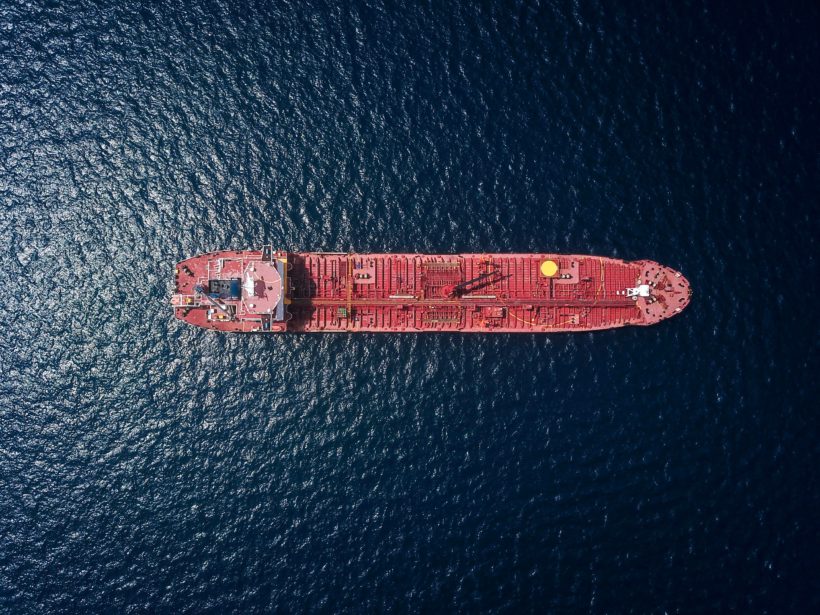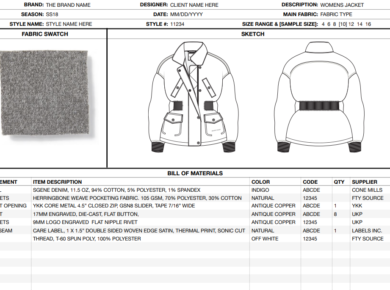We spoke to Ben Thompson, Co-Founder @ IncoDocs about the process for a buyer of how to ship & import products from overseas and what are the things you need to know:
- Introduction and background – 00:47
- The process from the beginning for shipping a product – 02:26
- Landed cost & how to calculate – 04:05
- Import duties & taxes – 05:25
- Freight forwarders & what to ask – 08:08
- Incoterms – 12:52
- Insurance – 16:10
- Where can a buyer find more information about taxation and cost of moving goods? – 18:31
- Good online reasource – Harmonsied tariff schedul – https://hts.usitc.gov/ Documentation and what you need to ship a product – 22:06
- Certificate of Origin – 24:13
- IncoDocs & what they can offer – 26:55
- IncoDocs & how it works – 29:18
- Top tips for a first time buyer importing goods – 32:19
Heather: Welcome to Meet The Buyer Sessions. I’m Heather, the Founder of Sourcing Playground. In these sessions, we talk to industry experts to help buyers and companies sourcing and developing products.
I’m here today with Ben, Co-Founder of IncoDocs.com, the online software that streamlines the shipping and documentation process.
In this session, we’ll be discussing the process for a buyer to ship their goods, ways to go about it and who can help. Especially for those first-time buyers, the world of shipping can be very daunting. Things like duty costs, customs fees, freight orders and we’ll be covering all these topics in this session.
Thanks very much for joining us today, Ben.
Ben: Thanks, Heather, it’s great to be here.
Heather: So, tell us a bit about your background and your experience in the field.
Ben: Yeah, okay. So, I started my career in importing about ten years ago. I started working for a trading company that specialised in sourcing manufactured products from factories throughout Asia and factories throughout China. So, that gave me a lot of experience when it comes to travelling to China and dealing with the right factories, finding the right products and then arranging all of the shipping and clearance through to customers. So, I did that for about four years. And then, my co-founder and I, we started our own imports business where we specialised in sourcing new products from factories throughout China and streamlining the whole process from purchasing through to shipping and customs clearance for customers all around Australia.
So, yeah, and that’s been about ten years now. So, yeah, it’s been good.
Heather: Yeah, So, it’s great to talk to someone that’s been, has had the experience for such a long time and you’ve gone through the process for not only yourself but for customers. You’ve had a real insight into sort of the challenges and where to go and how to sort of move, ship products.
So, yeah. Let’s start for today. So, let’s say for our buyers who have found a supplier and are getting their products manufactured and then suppliers are developing their products. Now, they need to think about, “Okay, I need to get them shipped.”
What do they need to do? Can you just walk us through the process of where do they need to go and what are the things they need to consider?
Ben: Okay, yup. So, if the new buyer has found suppliers and they’ve negotiated their products and got their quotes for their products, the first thing they should do is start looking into all of the other associated costs along the supply chain.
So, I’d recommend to meet with a freight forwarding company and that freight forwarding company will be able to give you rates for the additional costs. And there are so many additional costs involved in the supply chain. It’s important that you actually understand what they are so that you know that your actual landed cost of your product and if that works for your business.
So, I would recommend to find a freight forwarder and a good freight forwarder. There are different types of freight forwarders. There are very large companies that generally deal with large companies and then there are medium-sized freight forwarders and then smaller freight forwarders. I suggest that you meet, you actually physically meet with a freight forwarder and understand. Give them insight into your business. Tell them the products you’re looking to import and explain as much as you can and then they can get back to you with some shipping costs.
Heather: Amazing. Going back to your point about calculating your costs involved, could you give us an understanding of how a buyer would calculate the shipping costs and what are the things they need to consider and what are the ingredients and what they need to consider for landed costs?
Ben: Yeah, absolutely and it’s very, very important part and I would suggest that people completely understand their landed cost before going ahead with any new shipment or any new order. So, as I mentioned, there are a lot of additional costs involved along a supply chain and at first, it can look quite confusing. But, it can be easier to understand when you break it down into components.
So, firstly, you’ve been talking to your supplier, the end. They’ve given you a quotation for products, say for example a 20-foot container of furniture products and they’ve quoted you, say, FOB at Shanghai port, for example, that’s the cost of your products. When you meet with a freight forwarding company, they will give you quotations for a lot of different charges. One part of that is the international sea freight. So, that’s from port to port, that’s from the Shanghai port through to your port of delivery, wherever you are in the world.
And then, there will also be a lot of additional charges and it can seem confusing. There can be a lot of line items but there will be a lot of charges in your country of import and they will be in your local currency. And then, the other part to it is making sure that you understand your import duties that are charged on those products. They could be duty-free, they could have 5% import duty, 10% or more. It’s very, very important that you know that because that affects your landed cost.
And then, the other part to it is the import taxes that are charged on those goods when they come in. So, there are four main parts to the process is your product cost and your shipping sea freight cost is generally in US dollars. And then, you’ve got your local, all of your local port handling costs, customs clearance, trucking, etc. All of those costs will be in your local currency. So, what you’ve got to do is take your product and shipping costs, know your actual exchange rate and convert that to your local currency, then you add your local port handling, customs clearance costs, all of those local charges, you’ve got to split that up over your products.
So, it can be done in a few different ways and it depends on the type of cargo or the quantity. Say, for example, you’ve got 200 items of dining chairs in a container, you can get the total of those additional costs and spread them out evenly over 200 items. If you’re mixing items of different size, which usually are, you’ll have to work out the cubic measurement of each item. And as a total, take the costs of all those extra charges and split them out on a cubic measurement basis.
Heather: That can get quite technical, obviously. I mean, where would a buyer get all these measurements from? Is there something that they can talk to their freight forwarder or their supplier? How would they go about of calculating these measurements?
Ben: It’s always something that the supplier should provide you. So, when you’re in the sourcing process and your suppliers are giving you quotations for goods, it’s important that you get the cubic measurement and weight of each product so that you know which is greater. If your products weigh out, it maxes out the weight in the container, well then you know you can split up your additional costs by weight. But, yeah, definitely your supplier should give you a cubic measurement of each item that way you can get the total of all the additional costs and split them up evenly depending on how big they are.
Heather: And then in terms of actually getting them shipped, they would take this information and assume go and speak to their freight forwarder and go through all of the process and explain when you go meet a freight forwarder, what are the key takeaways that you should be finding out for your own shipment and your experience. It’s great to know these things, for your shipping.
Ben: Yes. So, one of the biggest things with meeting with a freight forwarder is to make sure that they care enough about your business. As I mentioned earlier, some freight forwarding companies are huge. You’ve got your DHLs of the world. And they’re only set up for dealing with big companies. And if you’re a small business, you’re not going to get any level of service that you need, you’re not going to be dealing with the same person each time. So, probably recommend that you actually sit down and meet with maybe two or three freight forwarders and explain to them in detail the products you’re wanting to import, where they’re coming from, where you need them trucked through to, how often you will be ordering them.
Ask them then about their rates for the sea freight, the shipping part, the rates for the local charges and get that feeling for that person that you’re going to deal with because there will be times where you have odd questions or you have small issues with shipments and you need an answer straight away and you need it quickly, otherwise, it’s going to hold things up.
So, yeah, really a) pick a forwarder that you trust and is going to give you a high level of service, but, b) make sure that their rates are competitive.
But that they can explain those rates so that you can actually break them down and work out what your landed cost is before you proceed with an import.
Heather: Yeah, that’s so true about building a relationship. And I guess it goes through into the whole sourcing development process is that spend time on building personal relationships with any company you’re using. It’s invaluable, I guess.
Say, for example, you’re a completely first-time buyer and you have no idea on the different types of companies you need to be talking to, can you explain a bit about the difference between the FedEx of the world, the DHL. What differentiates these guys to things like freight forwarders and who would I need to be talking to to move actual products and shipments?
Ben: Yup, well, some people believe that they think they need to be dealing direct with shipping lines and that’s not the case. When you’re a small business, you’re not moving any volume, you can’t deal with a shipping line, they don’t want to deal with you. You have to deal with a freight forwarder which connects the dots. They deal with everybody. They deal with the shipping lines and the customs clearance and the trucking, give you an all-in-one solution. As I mentioned, for the larger companies, the DHLs, if you’re only a small business you’re not going to get that service.
If you are a small business, there are medium-sized freight forwarders and even smaller freight forwarders that are only three or four people teams that provide really, really good service. So, yeah, it’s a matter of just meeting with the right people and making sure that they care about your business and are going to give you that tailored service.
Heather: And would you recommend having a freight forwarder? Let’s say, you actually would like to go with someone that’s just a three-man person. Is there any benefit of having them in the current country where you are or do they need to be based elsewhere?
Are there any benefits if these guys being located at different places or is it better for them to be actually closer to the products or is there any benefits where they’re located? Where should a buyer look for?
Ben: Well, I definitely recommend that they are based in your country, that they have a strong presence or an office within your country of import. It doesn’t necessarily have to be down the road or even in your same city. I’ve dealt with many freight forwarders before that are in the same country but they’ve provided such a good service that they’ve always called you and emailed you and being on top of every little detail. That you’ve got that service, you’ve got those updates that you need.
So, I wouldn’t recommend dealing with somebody overseas because they’re not going to be as familiar with all of the legal and customs requirements in your country. When it comes to clearing the cargo and sometimes when you’re importing different types of cargo, they really need to understand the local laws and regulations and give you a good advice and someone overseas might not be as familiar with that.
Heather: Yeah, definitely. Moving back to sort of the actual process of moving products, one thing that there’s a term that it goes around of Incoterms. Can you explain for someone what they are, what are the sort of normal commentary terms that people should be aware of and give us an idea of what they mean and what they mean for a buyer?
Ben: Yeah, well Incoterms are an extremely important part of the process and it’s, in my opinion, it’s one of the first things that new buyers should learn and understand how it works.
You don’t have to understand it in really finer detail but at a high level. Say, I’m an importer and I’m sourcing a 20-foot container of products, during that quotation and negotiation process, the supplier will give me pricing. But what does that pricing mean?
Is that ex works, is that FOB, that’s where the Incoterms come into it. So, for example, wo of the most common terms is ex works, EXW, and what that means is that the supplier has given you pricing for their product, generally in US dollars, let’s say, and that only covers the cost of the product until it leaves their warehouse. As soon as it leaves their warehouse, all of the additional local charges, export, customs clearance, freight, everything else afterwards is now the buyer’s responsibility.
So, an Incoterm is at a set point where the goods legally, the risk and the transfer of ownership and the ongoing charges will transfer from the buyer to the seller.
So, ex works is one of the most common terms. Also, FOB, which is free on board is quite a streamlined Incoterm which is very popular around the world. So, in that case, the supplier will give a 20-foot container, FOB price, free on board to say, Shanghai port.
And so, what that means is that the supplier will cover all the cost of the product, all of the internal costs in their country to get export cleared, to get the containers delivered, to get the containers packaged and loaded and loaded all the way up to the port and load it on board the actual vessel for export. So, then, once that’s done legally, that risk then transfers onto the buyer, the buyer then owns the cargo and the buyer is then responsible for the cargo and all extra charges after that point.
So, it’s definitely one thing that you need to understand firstly because you need to communicate that with your freight company. They’ll need to know what Incoterm you’re buying on and I definitely recommend, if you can, is to get an FOB quote to their nearest port and that will help you streamline a lot of the part of the freight process.
Heather: I guess, obviously, this makes a massive difference on pricing. For example, if a supplier is paying for extra shipping and shipping either way for free on board, as you say, or all the way to your front door, obviously, that would take a hit on the pricing you get. I guess, a big point to our buyers is the fact that do your research, find out what responsibilities you have, obviously, then, you can negotiate pricing better. And then, talking about, you mentioned about responsibility, which is really important actually because there are things like insurance and different things along the shipping lines.
Are there any things that buyers should be aware of and what type of insurances they need, do they need insurance and where can they go to get this?
Ben: Yeah, absolutely. I definitely recommend for the buyer to get marine insurance but it does actually depend on that Incoterm that’s agreed between the buyer and the seller. It’s very important that the buyer understands the Incoterm and when that point is that the risk transfers onto them because some people overlook it and then they purchase new products overseas and they forget to arrange the marine insurance that they are liable for those products. If those products get damaged, if the container gets dropped or the container gets destroyed or falls off the side of a boat, they’re not going to get any money back, whatsoever and it actually puts them in a very bad position when it comes to insurance.
So, all shippers should reach out and again, in the case of a freight forwarding company, find a marine insurance specialist. I mean, not just any general insurance company. They’re not going to understand marine insurance if anything at all. So, a marine insurance broker will understand your case. Sit down with them, tell them the Incoterm you’re buying the goods on, explain to them your business, how often you’ll be buying the goods, how you’re shipping them in, where you need them delivered and they will be able to give you a tailored pricing.
Sometimes, if you’re not shipping huge volumes they can give you ones all covers. But, if you are shipping four to six shipments a year or more, they might recommend for you to get an annual marine insurance cover, which will cover it for the year.
Heather: And I guess, there are so many different costs, as you mentioned before, about different customs tariffs and import cost, duty cost and it can get a little bit overwhelming.
Obviously, as you say, depending on where, what type of pricing you have will depend on the tax that you have to pay, basically. So, where would you suggest a buyer go to find out this information?
Is there sort of one site that they can have a look at to say, “Okay, if I’m moving stock from country A to country B, what’s the type of tariffs and costs I’m looking for?” What would you give as advice for someone looking at that process?
Ben: Yeah, it’s a very, very common question. People are trying to find this out all the time. And yes, the important thing to understand is that the import duty and import tax does vary absolutely for every single country. But, the single common thing that is the same is the unique identifier of the product. So, that is the harmonised tariff system code.
It’s either abbreviated as a HS code or a HTS code. And, the importer will need to find out what the HS code of the product is and there are a few ways they can do this.
Online, I’ve come across a website called harmonised Tariff Schedule where you can type in a description of your products and then it’s a searchable database where you can classify the products and for yourself try and distinguish which category they fall under. But, I highly recommend that you actually, and again, this comes back to meeting with a good freight forwarder, is speak to your freight forwarder about it and they will generally have a customs department, a customs broker department. And, those customs brokers are highly trained in identifying the HS code and they will make that process a lot easier. So, they’ll be able to identify the code is the first thing. Once you’ve done that, they should come back to you and say, “For each product, this is the HS code and this is the percentage of import duty that’s applicable when you import it into the country.” And it varies for every product, the import duty varies for every product.
Heather: I guess this is really important to do that right at the early stages because, obviously, this dictates the pricing you’re going to have and I guess so how you negotiate with your supplier.
Ben: Yeah, absolutely. Before you’re even thinking about placing an order, you should definitely know this. I mean, you can still source for your suppliers and get pricing and quotes back from them, but as soon as you’ve got that, you’ve got to start looking into your landed costs. And, as you say, that there are so many additional charges and if you’re not aware of them, I mean, you can’t go in blind.
I’ve talked to a lot of people in the past where they’ve just ordered goods from overseas. They haven’t understood the Incoterm, they’ve received a container that’s been held up at customs and they’ve got invoice of–
Heather: They’ve got tax to pay.
Ben: They go, “What are these taxes, what are these duties, what are these
charges?” And, it’s quite silly and quite naïve of somebody to do that. So,
you’ve got to understand your actual freight costs, the actual import duty and
how the tax is added to that at the end. So, definitely, do not go ahead with
anything before you do that and meet with a good freight forwarder that’s going
to help you through these processes.
Heather: Biggest tip of the video, do all the calculations before ordering, that’s the biggest point. You don’t want a big tax bill when you move the stock into your country.
So, going back to the documentations and when you’re talking about ordering, obviously, there are lots of different back-and-forths. You’ve got purchase orders and lots of different documents through the whole process.
Can you explain them and sort of what do they need to know beforehand? Is there anything they can prepare? Yeah, just walk us through that process.
Ben: Yeah, absolutely. So, in the enquiry stage, the suppliers would be sending you just basic quotations for their goods. That will include the Incoterms to that sort of thing. If you want to place an order, the importer, as a buyer, you should be sending a purchase order document to confirm your order and then the supplier will send a pro forma invoice to request payment for that deal.
Then, the supplier will go away and manufacture the products, pack it and get it shipped. Once it shipped, it’s their responsibility to pass off to you, to the buyer, the shipping documentation as soon as possible. So, that shipping documentation includes
1) bill of lading, which is essentially, a receipt a proof of shipment that the goods have been actually loaded onboard the vessel on this date and time and it’s a proven receipt from the shipping line.
2) is a commercial invoice, which is a detailed invoice with the value of the products generally the HS codes and who it’s being sold to and then the packing list which is a detailed document stating how those goods are packaged inside the container. Are they on pallets or crates or cartons or whatever.
So, they’re the three main types of documents but in in any different case, there can be others. For example, a packing declaration is a document the supplier sometimes has to give to state the types of packaging materials that have been used inside the shipment. So, that’s to ensure that they haven’t used any raw timbers or bark material that’s been used in the packaging that can hold insects and hold disease in the country on the other side.
Heather: No illegals there.
Ben: No, exactly. So, that’s another document and another important document is, which is becoming more and more popular now, is the certificate of origin and that is a document the supplier will give to the buyer which states that the products sold have actually been manufactured in that country of export. So, why that matters is so that if the country of export and the country of import have a current free-trade agreement in place, if the supplier gives that certificate of origin that can reduce the import duties that the buyer has to pay when they clear the goods or in some cases, it can eliminate the import duties.
So, it’s very important that if your country that you’re buying from and the country that you’re bringing your goods into have a free trade agreement, that’s great. Make sure your supplier gives you a certificate of origin. They actually have to get that. You need that to get the benefit and they need to actually get that from their local Chamber of Commerce, they have to sign and stamp that certificate and you can use that to save money.
Heather: So, is that something that a buyer has to ask or for example, should that be given as a standard from the supplier?
Ben: No, you shouldn’t assume that the supplier will give it to you because one factory can export to so many different countries that they’re not aware of these free trade agreements all the time. I mean, they probably should be but don’t rely on them doing this. I mean, it’s if you’ve met with your freight forwarder, they should be telling you this you’ve got a free-trade agreement to make sure you ask your supplier for a certificate of origin.
They should be familiar with how to get it but if not, tell them to go to their local Chamber of Commerce and get that certificate of origin stamped.
Heather: And is that for product and not for shipments, that the certificate of origin is on each product level, is that correct?
Ben: Yeah, well, the certificate of origin. One certificate of origin from one supplier will group together the products they have supplied. So, if they have supplied four or five or ten different products, that one certificate will cover all of that and that can be used in the import process.
Heather: I guess, obviously, this is the documentation process through the whole shipment can be quite confusing, it’s quite long and so these leads us into a bit about IncoDocs. So, tell us a bit about what you guys do and how you can help in this process?
Ben: Yeah, absolutely.
So, yeah, I guess, we created IncoDocs because through our own experience through buying goods out of Asia, the whole shipping documentation part was broken.
You get suppliers that would just send you terrible documents that were made in Microsoft Word and Excel and just coming together and hoping that that would be okay for customs clearance into your country. And, for such an important thing to get it wrong, costs so much money and causes so many problems. It can hold up shipments, it can cause fines, delays, miss shipments, all sorts of stuff.
So, yeah, basically, from running our own business, we’re having these issues. We looked into the market and didn’t see any good solution so we started developing software. So, that’s what has become IncoDocs and what it does is it allows importers and exporters to connect, to create, one, compliant shipping documents, so that you know the documents you are creating or the documents your supplier is creating, they’re actually to a set United Nations standard, that they are going to meet compliance, they’re not going to cause problems when you try to clear them into your country. It also allows shippers to create documents ten times faster because there’s all these documents that need to be created along the way and its just data that’s being retyped all the time, all the time, every time.
Using IncoDocs, you create one document and you can basically, it’s copied data that can be transferred onto all documents, save you time and you can share it with whoever you need before you have to and they did just solve so many issues.
Heather: That saves so much time to the whole process and not having members of lots of your team spending hours and hours inputting data and spending time sending documents. This would be a lifesaver.
So, walk us through the process. A buyer comes onto your site and they’ve got goods on order, for example, they’re going through the ordering process. Explain how they physically, how do they use your site? How would it work?
Ben: Okay, so if you’re a buyer and you’re purchasing goods, you can log on to IncoDocs on our website, incodocs.com and create a purchase order document. That’s the document the importer will create.
They will send that order document, share it to their supplier on the system and then from that purchase order, the supplier can then instantly create a pro forma invoice back to you with using the same information without retyping information for you to confirm. So, then, they’ll get the goods on underway.
They’ll start manufacturing the goods and when the goods are shipped, the exporter, the supplier, they can login to IncoDocs again, where they’re connected to your portal and they can create all of the additional shipping documents they need to give you in time before that shipment arrives. So, it’s got benefits for both importers and exporters to get the documents created in time. And whoever’s creating the documents can do them really quickly and know that they’re doing them correctly.
Heather: And I guess, it’s great, rather than sending all these via email which is usually quite inconsistent. You have to copy in so many people and it get quite messy. It’s just one place for both parties and both sides and within their own teams and within their own companies, they can access all these documents, collaboratively. It really tries to streamline that process.
Ben: Yeah, absolutely. And that’s what it’s all about. It’s all about storing everything in one place. Everything is lost over emails. I mean, email trails. People are wasting time searching for updates for shipments, searching for documents. And, at a company level, especially, if you’ve got a lot of orders placed at the same time, the industry lacks a lot of visibility into where your orders are at and just the manager has to keep asking people where it’s at, where it is. They’ve got a shared login, they can login, they can see the status of all their orders, they can access the shipping documents if they need and they can see all the comments and updates about their shipments.
If somebody’s sick and away in that company and is halfway through an order, there’s nothing worse than somebody trying to pick up from where they are at. So, it really gives company one secure place to store all their trade documentation.
Heather: Yeah, definitely. Even from my experience, if one person that’s dealing with all the shipments goes on holidays or anything then things stand still and you have to sort out the documents that have been sent, you have to just wait, things are held up and it’s on a company-wide level, that requires stock to be moved on time.
Everything is quite time-sensitive in this industry. You can’t have delays.
So, having everything in one place is really fantastic. So, it’s great to see you guys are tackling that issue.
Ben: Yeah. That’s good.
Heather: Yeah, just to wrap it up, Ben.
What would you say for a first-time buyer the best advice would you give people who are starting out? What do they need to do and how can they prepare themselves?
Ben: Okay, so, when it comes to dealing with sourcing suppliers, I would definitely recommend that you compare at least five suppliers’ quotations. Always compare quotes, get a feel for the market and don’t go with the cheapest option.
If it’s cheap for a reason, just stay away. Before going ahead with any orders, I would make sure you get samples, actual samples from the suppliers for the product that you need so that you can touch it, you can feel it, you can test it and know that it’s good for your market.
Don’t ever order anything without understanding your landed cost of your product.
Again, meet with a good freight forwarding company. Sit down with them, let them understand your business and get them to explain to you the additional costs of sea freight, the cost of the local customs clearance and local port charges and trucking charges.
Understand the import duty, if any, that’s on your goods and the import tax on your goods. So, if you understand those costs, you can calculate that over your product and understand your landed costs, that will give you the information to make the decision,
“Should I order these goods or not? Are they cheap enough or are they not?”
And then, I would recommend that your suppliers are creating compliant shipping documents. I mean, it’s cost us so much time and money when you get it wrong. So, just make sure that your suppliers know what they’re doing, that they transfer good documents on time so that everything gets cleared and everybody’s happy.
Heather: Well, fantastic. Thanks very much, Ben.
You’ve given some really fantastic insight and really actual tips for our listeners. Thank you very much and thanks very much for your time.
Ben: Okay, no problem.
Heather: Well, thanks for everyone for watching from Meet The Buyer Sessions.
Thanks very much.
Start your sourcing journey here today






